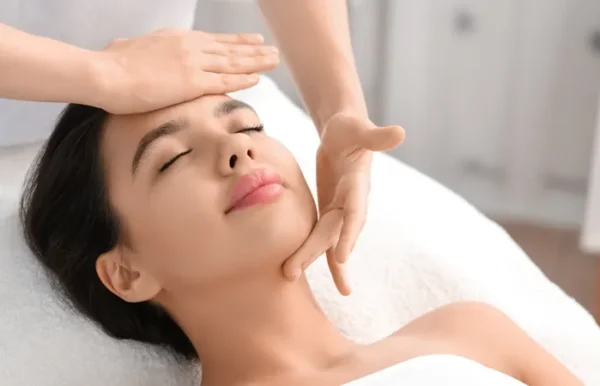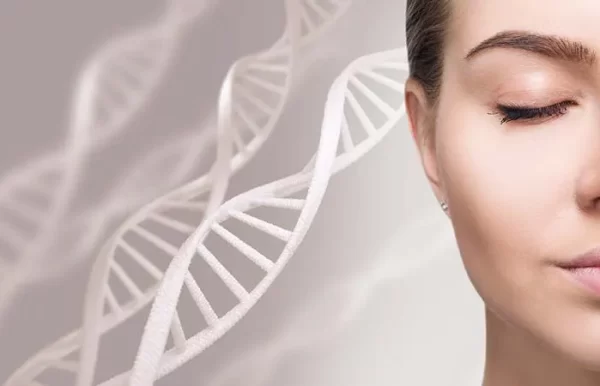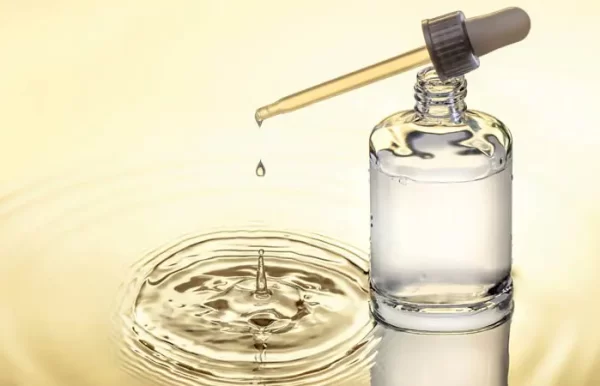If you’ve ever browsed the over-the-counter skincare selection targeting pigmentation, you’ll notice hydroquinone as a key main component. You’ve probably also noticed brands which market “hydroquinone-free” skin lighteners. What is hydroquinone, and why all the controversy? Let’s break it down.
What is Hydroquinone and What does it do to the skin?
Hydroquinone (1,4 dihydroxybenzene) is a bleaching agent that competes with the enzyme responsible for melanin or pigment formation. It also produces Reactive Oxygen Species to damage pigment-producing cells called melanocytes and pigment granules or melanosomes.1 It is commonly prescribed for pigmentary disorders such as melasma, photoaging, and pigmentation produced after trauma to the skin. Hydroquinone is available in a 2% over-the-counter formulation, and higher strengths with a prescription.

What OTC products contain Hydroquinone?
Popular over-the-counter hydroquinone products are discussed below. Many of these brands contain glycolic acid, kojic acid, or other agents which may also help mitigate pigmentation. Additionally, glycolic acid and tretinoin enhance the penetration of hydroquinone. Some have sunscreen which is a critical component to preventing worsening of pigmentation.
- Paula’s Choice Triple-Action Dark Eraser 7% AHA Lotion – 2 % hydroquinone and glycolic acid
- Ambi SkinCare Fade Cream – 2% hydroquinone, 2% oxtinoxate
- Glytone Dark Spot Corrector – 2% hydroquinone, glycolic acid, and kojic acid
The History of Hydroquinone
Hydroquinone’s ability to lighten skin was first discovered in 1936 when scientists noticed graying coat hair in black cats who ingested it in oral form. In the 1950s, hydroquinone was used as a sunscreen, and people coincidentally noticed the lightening of the skin. Since then, numerous studies have touted the efficacy of hydroquinone as a lightening agent.2 It is regarded as a top contender as a lightening agent worldwide and has been proven to be superior to other lightening agents such as tretinoin 0.025% and kojic acid 0.75%.2,3,4 Many over-the-counter and prescription products, however, contain several lightening agents in addition to hydroquinone, in an effort to produce better results than hydroquinone alone.
Hydroquinone: Uses, complications, risks, and more
Products with hydroquinone are not without risk, though. There are several adverse events reported with its use. Short-term use complications include:
- Contact dermatitis: Contact dermatitis is a sensitivity of the skin to the applied product. It presents as an itchy pink scaly rash in areas of contact with the culprit. Contact dermatitis has been reported in a high percentage of users and is dependent on the strength of hydroquinone used. It may be categorized as allergic or irritant, and irritant contact dermatitis is much more common.
Chronic use concerns include:
- Ochronosis: Ochronosis is a paradoxical permanent discoloration of the skin, and is very difficult to fix. Ochronosis presents as a slate blue to gray pigmentation. This was initially discovered when South African women used high concentrations for long periods of time. Many cases in the US have surprisingly occurred with the over-the-counter 2% formulation.2 When used with other ochronosis-inducing agents such as resorcinol or phenol, there is a higher potential for ochronosis.5
- Nail discoloration: Hydroquinone has been reported to cause a brown discoloration of the nails, which is typically reversible after discontinuing it’s use.6
- Temporary dark staining: When used with benzoyl peroxide or hydrogen peroxide, hydroquinone may cause temporary dark staining. This staining may be washed off with soap and water.
- Eye toxicity: Ocular or eye discoloration may lead to decreased visual acuity. This has mainly been observed in people who work with hydroquinone expelled into the air. Hydroquinone has been used in photographic developers, paint stabilizers, fuels or oils, and paints or varnishes.2
- Carcinogenecity: The most controversial adverse event is carcinogenecity. The concern originates from benzene, which is a carcinogenic compound that is metabolized into hydroquinone. Benzene has caused leukemia in humans. Hydroquinone has been linked to renal cancers in vitro at very high concentrations. Keep in mind, in vitro pertains to studies that are performed within the test tube, and in vivo includes testing in living beings. This suggests that the body is capable of metabolizing hydroquinone to safe byproducts. An increased risk of malignancy has been linked to oral hydroquinone in animal studies, however, these are at much higher doses than used topically.2,6
Although current studies have not proven a link between malignancy and topical hydroquinone use in humans, further studies are needed, and we cannot entirely exclude this possibility. Regardless, it is critical that you consult your board-certified dermatologist prior to any use of hydroquinone and follow instructions for use closely.
Is Hydroquinone banned in the UK?
Given the controversy, several countries in Africa, Europe, and Asia have banned the use of hydroquinone. Many companies took to creating “hydroquinone-free” lightening agents. Other lightening agents available on the market today include vitamin c, retinoids, kojic acid, ellagic acid, lactic acid, azeleic acid, glycolic acid, liquorice, retinaldehyde, salicylic acid, niacinamide, and transexemic acid.2 For hydroquinone-free options, popular brands include the following:
- SkinCeuticals Discoloration Defense – 3% transexemic acid, 1% kojic acid, 5% niacinamide, and 5% HEPES
- SkinCeuticals Advanced Pigment Corrector – 0.3% salicylic acid, 1% hydroxyphenoxy Propionic Acid, and 0.5% ellagic acid
- Cyspera – cysteamine (note: this is only available at dispensing clinics)
SEE ALSO – Skinceuticals A.G.E. Eye Cream
What are some other side effects of Hydroquinone?
Oftentimes, to mitigate the potential side effects of hydroquinone such as dry skin, skin irritation, redness, your dermatologist will instruct you to use it in short bursts, depending on the strength prescribed. It is not extremely stable in topical products and may oxidize, rendering it ineffective. If you have been prescribed hydroquinone by your dermatologist, make sure to check that it has not turned brown or yellow, as these are signs of oxidation.7
Conclusion
In summary, hydroquinone has been proven to be effective in many hyperpigmentation dermatologic disorders, and its toxicity has not yet been proven in humans. Additional lighting procedures include peels and lasers. Although proven effective for pigmentary disorders, hydroquinone should NOT be used to lighten moles or brown spots. The potential risks of hydroquinone cannot and should not be overlooked. If you think you have a pigmentary disorder, you should see your board-certified dermatologist and if hydroquinone is prescribed, it is imperative that you use it as directed. You should not seek over-the-counter forms of it before discussing it with your provider.
**The content of this article is for informational purposes only and is not intended to be a substitute for professional medical advice, diagnosis, or treatment.






 This article changed my life!
This article changed my life!
 This article was informative.
This article was informative.
 I have a medical question.
I have a medical question.

 This article contains incorrect information.
This article contains incorrect information.
 This article doesn’t have the information I’m looking for.
This article doesn’t have the information I’m looking for.